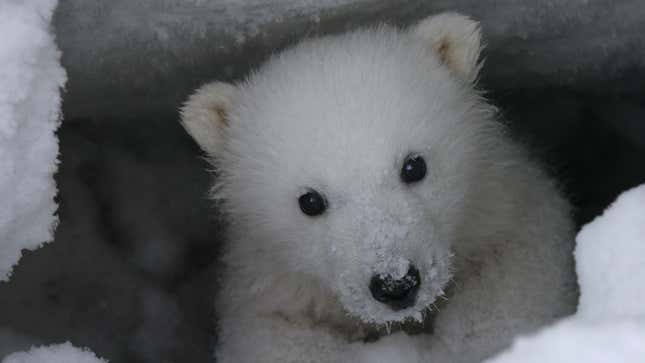
Pregnant polar bears enter dens when they give birth for up to eight months. The process makes bear moms super vulnerable—they fast, surviving off the fat on their bodies, and can lose up to 43% of their body weight. And in that environment, the moms must care for their newborn cubs.
But these environments are increasingly under threat from oil and gas drilling and exploration, and it could be deadly for moms and cubs. A new study conducted by scientists with Polar Bears International and published in the Arctic Journal on Tuesday analyzed polar bear den disturbances by human and industry stressors using other researchers’ field observations from 1979 to 2016 from Alaska’s North Slope, around the southern Beaufort Sea.
They found that polar bears are remarkably attached to their dens. Through all kinds of disturbances to the dens—drilling nearby, aircrafts flying overhead, snow machines being parked atop them, even people directly digging into them—only 8% of the polar bears observed abandoned them.
“We found that most polar bear mothers will stay in their dens rather than fleeing when a disturbance is nearby, meaning that machinery could drive over dens and possibly kill the bears inside,” Wesley Larson, the study’s lead author and a biologist at Brigham Young University, said in a statement emailed to Earther.
Staying in dens could put bear moms and cubs at severe risk. They can be run over by equipment or buried by displaced snow. And the vibrations from seismic technologies used for fossil fuel exploration could also potentially be harmful.
There are protections in place for polar bears. The U.S. Fish and Wildlife Service mandates that human activity stay at least one mile away from known polar bear dens. The energy industry also has tools to locate the dens and map areas to avoid in their operation, but a recent study in PLOS One found that their main tool to do so works works less than half the time. But the new study shows the risks even as oil drilling is becoming an even bigger concern for polar bears as the Trump administration looks to open up new parts of Alaska’s North Slope. Alaska’s Congressional delegation, Republicans, and the administration also keep trying to twist the arm of banks to fund more Arctic drilling (something banks have largely turned against).
Luckily, there’s another option to save denning polar bears: don’t drill for any more oil and gas in their habitats. Doing so would also lower greenhouse gas emissions and thereby slow down ice melting. That would help polar bears, too, since disappearing ice degrades their habitat and puts them at further risk. Plus, scientists have made it clear that we have to stop fossil fuel expansion as fast as possible to avoid catastrophic climate breakdown, anyway. So we may as well start by halting drilling in Alaska.